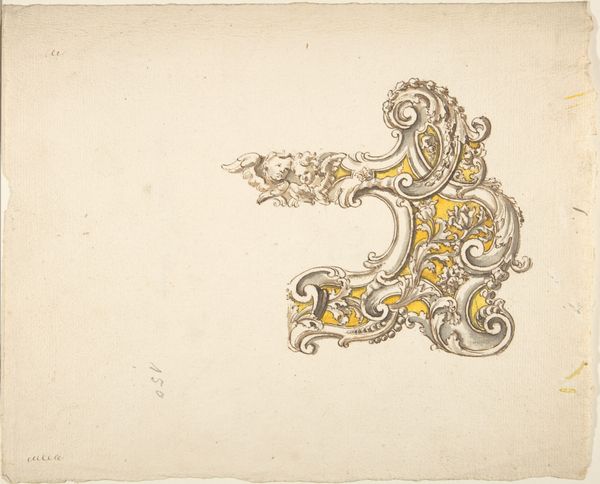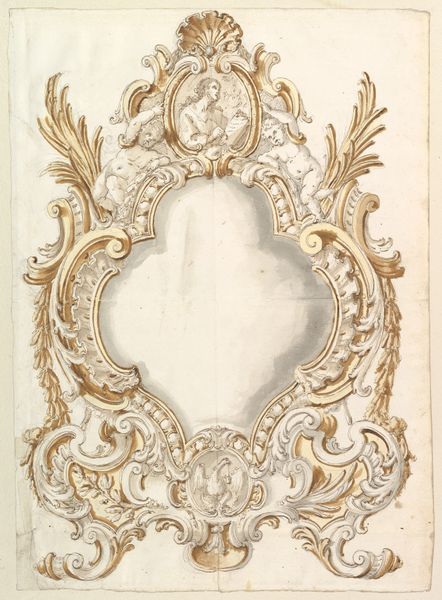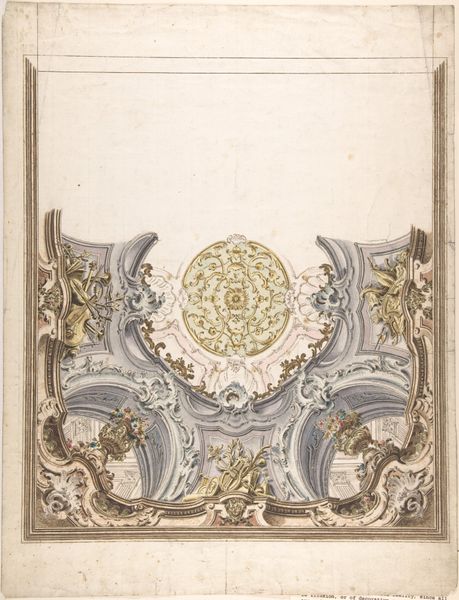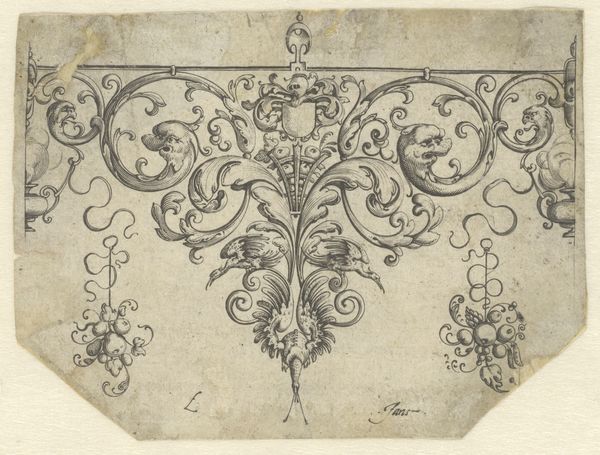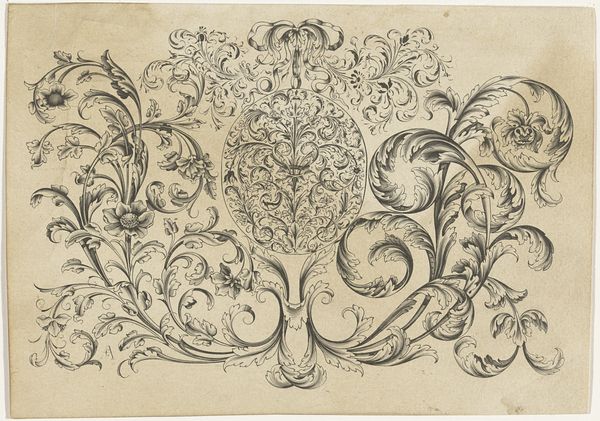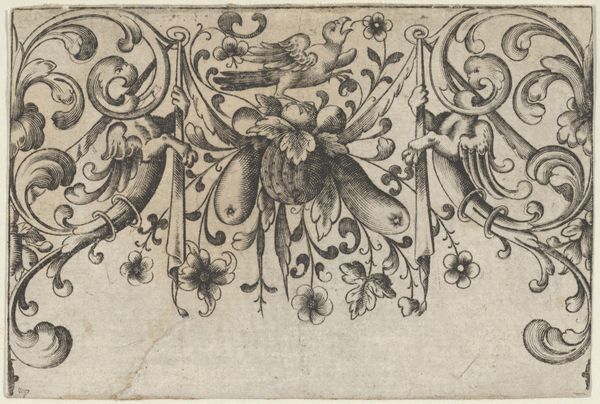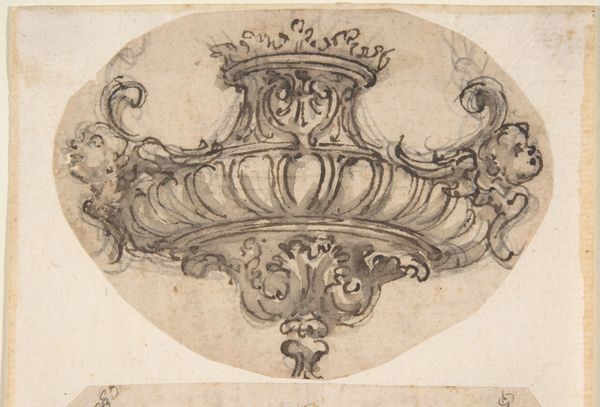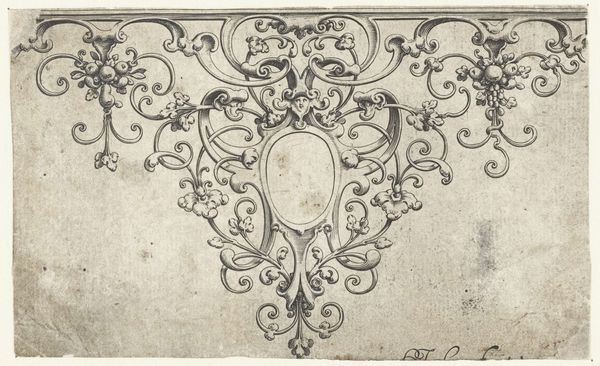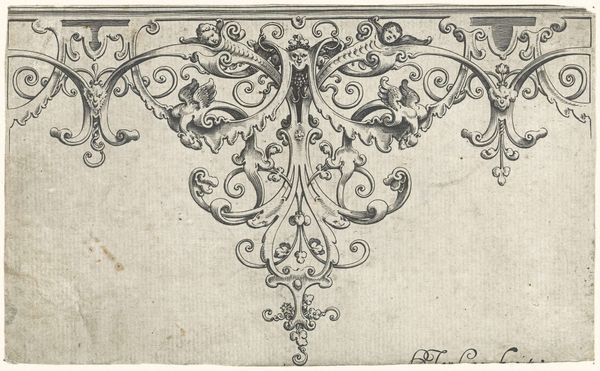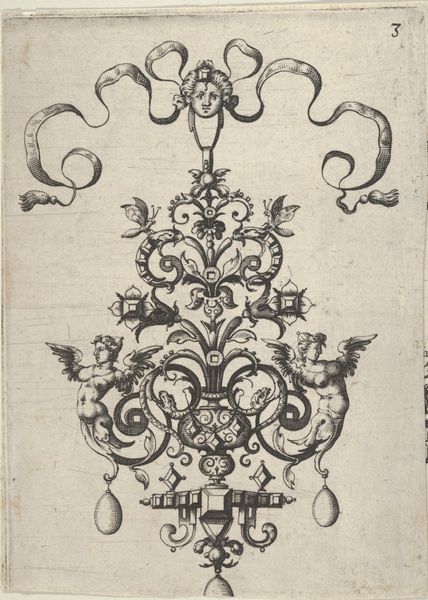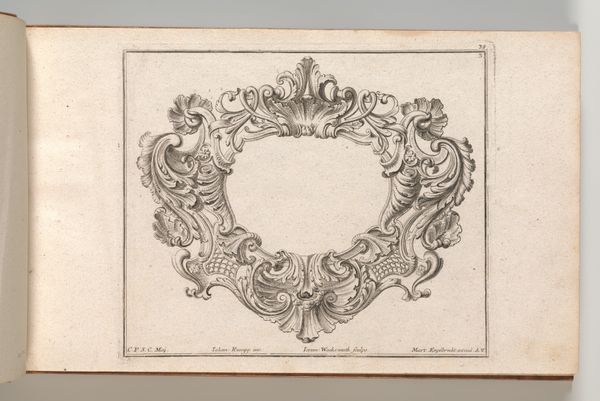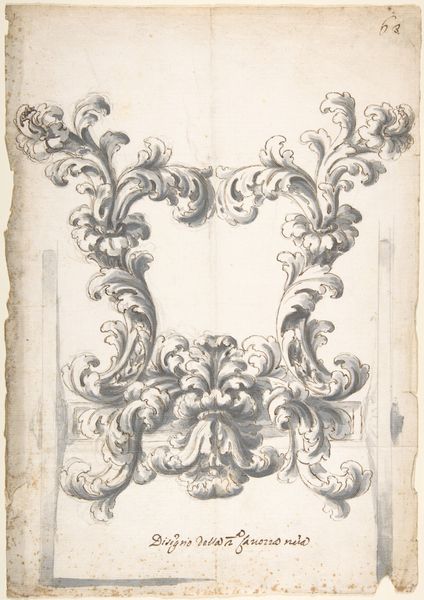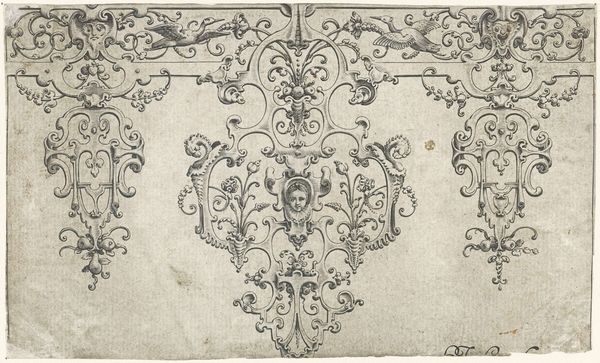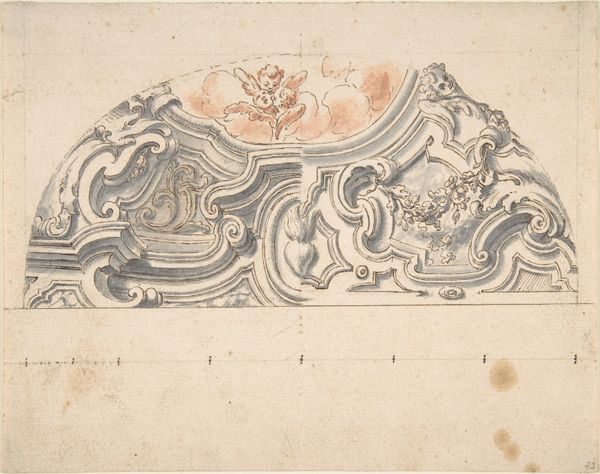
drawing, print, watercolor
#
drawing
#
allegory
# print
#
form
#
watercolor
#
line
#
watercolour bleed
#
watercolour illustration
#
miniature
#
rococo
Dimensions: 8-3/8 x 10-1/4 in (21.2 x 26.3 cm)
Copyright: Public Domain
Curator: Look at this delicate watercolor illustration. It’s a Rococo cartouche populated with cherubs, likely dating back to the 18th century. Editor: My first impression? Opulence! The scrollwork and that rich yellow—it feels like looking into a gilded mirror frame in a palace. Curator: Indeed. Rococo was all about extravagance, mirroring the aristocratic excess of the time. But more than that, I see it as a reflection of shifting power dynamics, with artists responding to, and often subtly subverting, the visual language of the elite. Editor: Subverting, perhaps. But isn't the overwhelming effect here decorative and indulgent? Notice how the artist plays with line and form—the cascading curves, the repeating motifs. There is an abstract rhythm that is deeply appealing to the eye. Curator: But those "abstract rhythms" served a purpose! Rococo often masked complex social anxieties and power plays behind playful imagery. Consider the cherubs, they symbolize innocence but were also used to legitimize the rule of the church. Editor: I see them more as elements contributing to the visual dance across the surface. The cartouche shape provides structure. The cherubs punctuate the design with their little bursts of detail. It all combines to form an ideal that satisfies visual harmonies and intellectual aspirations. Curator: Fair, but we must also ask: Whose gaze is prioritized? Whose stories are silenced? Analyzing these visual elements provides insight to these issues and informs conversations about inclusivity within these canons. Editor: Your points regarding inclusion are crucial, especially in retrospect. However, let us appreciate the craft—the masterful manipulation of form and the careful balance of color and tone. It speaks volumes. Curator: And, for me, about the cultural complexities it embodied and the ongoing need to challenge existing systems of representation within the arts. Editor: Absolutely. Analyzing visual syntax allows us to interpret both aesthetic and historical narratives. Curator: Precisely, which gives voice to different understandings across time and perspective.
Comments
No comments
Be the first to comment and join the conversation on the ultimate creative platform.
